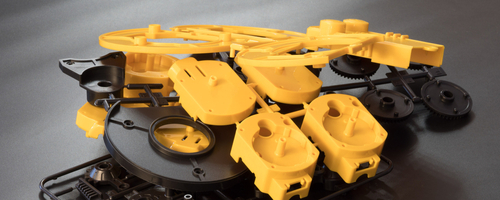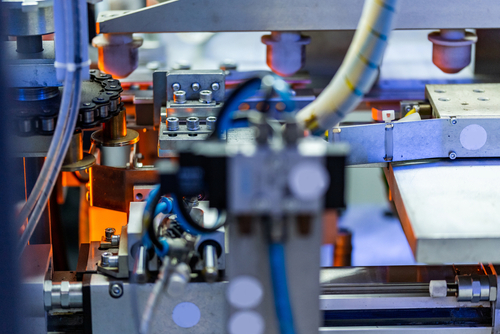While cost shouldn’t be a deciding factor, it plays a significant role when looking for a reliable molding company that can meet your needs. Whether it’s ceramic or plastic molding manufacturing, there are different factors that affect the cost of your final product. In the following text, we give you a detailed overview of the crucial elements that can help you understand why some parts are more expensive than others.
 How to calculate the cost of injection molding?
How to calculate the cost of injection molding?
Understanding the way cost is calculated can not only help you make a more informed decision but it can also allow you to work closely with your chosen supplier and improve the cost-effectiveness of your design. Here are the essential factors:
Materials
The choice of plastic resin or ceramic powder significantly affects the overall cost. Common plastics such as polyethylene and polypropylene are relatively inexpensive, while engineering materials like polyether ether ketone (PEEK) are costlier. Ceramic materials are also more expensive than plastics, as their process of procurement is usually more complex because of the high purity that’s required in order to achieve the desired properties.
Tooling
The cost of tooling can widely vary. Simple molds with fewer cavities are cheaper, while complex designs with multiple cavities and tight tolerances are more expensive. In addition, the material choice of the mold can also affect the cost. They are usually made of aluminum or steel, with the latter being a more durable and costlier option.
In ceramic molding, the molds need to be able to withstand extremely high pressures and temperatures, which is why they’re more complex and costly to manufacture.
Production process
When it comes to plastic parts molding, the cycle time is relatively short, typically between a few seconds to several minutes. This is why the process is excellent for high-volume production and has a lower per-unit cost.
On the other hand, ceramic molding requires more time, as the green body needs to undergo the processes of debinding and sintering to achieve the final properties. These steps lengthen the cycle and therefore increase the cost per unit.
Post-processing
Depending on your application, the final product may or may not require post-processing steps. Plastic parts may need trimming, painting or assembling, which are generally cost-effective. However, specialized processing, such as applying coatings for UV protection or adding metallic finishes can add to the overall cost.
Finished ceramic parts may require polishing, grinding, or precision machining to achieve the desired surface finish and dimensions. As these processes require specialized equipment, they also add to the cost.
Production scale
High-volume production is efficient as it can spread the fixed costs of tooling, setup, and any required post-processing steps across a larger number of units and reduce the per-unit cost. On the other hand, small batch manufacturing can be more expensive because these fixed costs are distributed over fewer units.
Where can I find reliable experts for ceramic & plastic mold manufacturing?
When you want to explore the history of injection molding, learn more about industry’s latest technological developments, or you’re not sure what to look for in a manufacturer, reach out to Wunder Mold. Our crew consists of highly trained, skilled, and experienced specialists who are ready to create high-quality customized solutions for your specific requirements. Whether you need your parts delivered to you in the U.S. or any other country across the globe, we’re here to give you exactly what you need. Get in touch with us by phone or send us an email at sales@wundermold.com and our team will promptly get back to you to discuss your project and offer effective solutions.
